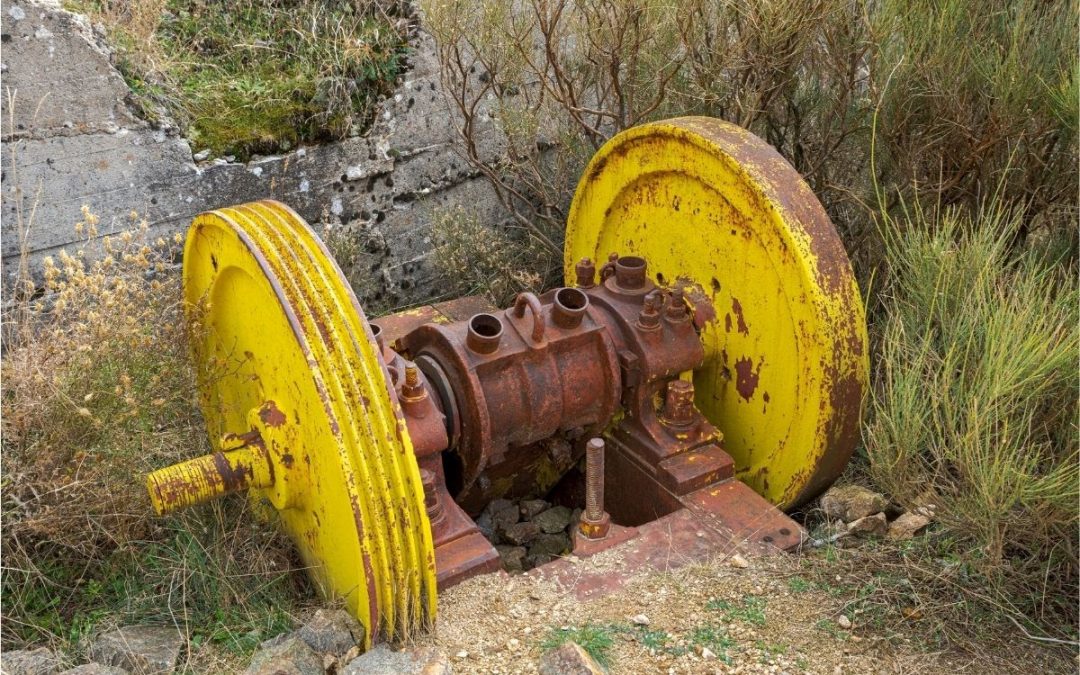Published February 18, 2021
Have you ever wondered how contractors reduce large chunks of rock or concrete to size? Whether it’s creating aggregates or mining, jaw crushers are your go-to. Jaw crushers were created in 1858 by Eli Whitney Blake. And since then, they’ve only become more widespread. This article will focus on what jaw crushers are and how they’re used in the professional setting.
What is a Jaw Crusher?
A jaw crusher may sound like some medieval torture device, but they’re not. While they could be used to that effect, they’re more widely used in the areas of demolition and mining. A jaw crusher essentially crushes large rocks to a more usable size. They’re typically the first-line machinery used in the material reduction for several applications. This includes rock quarries, sand and gravel, construction aggregates, metallurgy, and chemical industries. Jaw crushers are specifically designed to handle large feed and withstand abrasive material. They’re at the forefront of sand, gravel, and mineral processing because of their effectiveness in breaking down large chunks.
How does a Jaw Crusher work?
Jaw crushers typically use the principles of compression and friction to break materials down. They’re extremely powerful equipment that should be used with the utmost care. Jaw crushers are so powerful that they’ve earned the moniker “rock breakers” because of their brute force.
All jaw crushers will have one fixed jaw and a moving one. These two form a V-shaped chamber, where the materials are fed. The movable jaw will move back and forth against the fixed one, compressing all materials in the space between. The mobile jaw’s movement will not be fixed from side-to-side. Instead, it moves in an elliptical motion with help from massively weighted flywheels.
As the moving jaw moves away from the fixed one, this creates a gap between the jaws. The discharge will fall through this gap, the size of which determines the size of the discharge. The gap size is often readily adjustable to suit whatever purpose for rock breaking.

Benefits of using Jaw Crushers
Here are some of the key benefits of using jaw crushers:
- High throughput
- Efficient size-reduction
- Breaking jaws made of hard materials
- No-rebound feed hopper
- Fine finished product
- Easy-to-clean crushing chambers
Popular types of Jaw Crushers
Double Toggle – Blake Type or Overhead Pivot Movement
Double toggle jaw crushers are the classic style of jaw crushers. They’re also popularly known as the “Blake type” because of their similar mechanism to the original jaw crusher by Eli Whitney Blake. For a long time, this has been the standard for breaking abrasive and hard materials, having been used for over a century. This variation has a higher energy-efficiency as well as a longer useful life. Double toggle jaw crushers use only pressure (less friction) to break large and hard materials.
Single Toggle – Overhead Eccentric Movement
Single toggle jaw crushers have grown quite popular over the past few years. Compared to the double toggle ones, the primary downside of single toggle jaw crushers is that their feed capacity was quite small before. This is because single toggle machines are much more compact, thus accepting smaller feed sizes. But it’s good to know that this problem has mostly been solved due to technological advancements. These days, single toggle jaw crushers are highly valued because of how quickly they process materials. This comes at a cost, though, as this variation tends to wear much quicker than the other. This is in part due to the fact that single toggle jaw crushers also heavily utilize friction to break materials down. So, it should come as good news that the parts that wear easily are readily available and not too expensive.
Interested In Cutting Technologies?
For nearly 40 years Cutting Technologies (CTI) has been the go-to demolition contractor for technically demanding, one-off jobs. Our wealth of experience enables CTI to bring “outside-of-the-block” approaches to achieve the impossible. Contractors trust CTI to get the job done right. Take a look at our demolition services on our website.

About The Author
Terrence Tan Ting is an industrial engineer by profession but a full time writer by passion. He loves to write about a wide range of topics from many different industries thanks to his undying curiosity.

